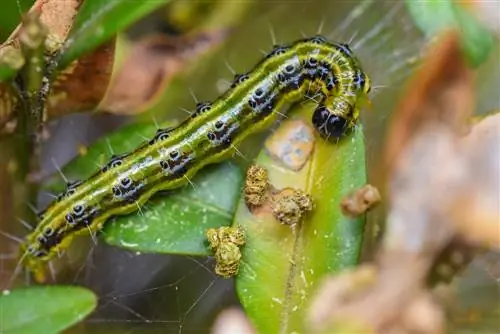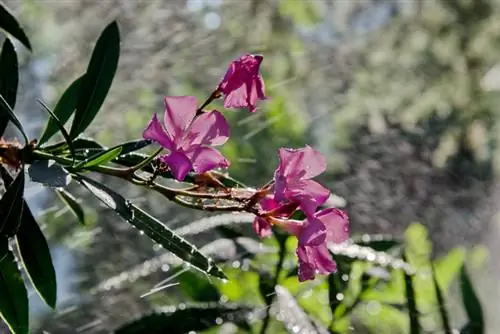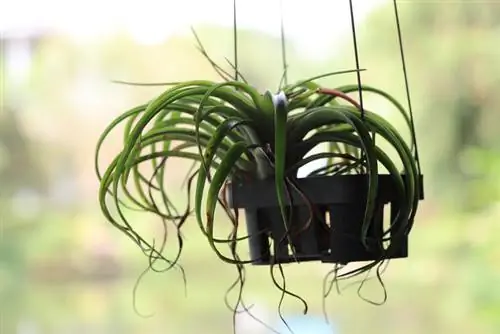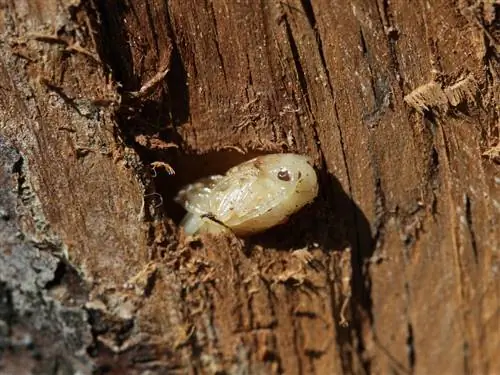- Author admin [email protected].
- Public 2023-12-16 16:46.
- Last modified 2025-01-23 11:21.
The boxwood moth is a butterfly that probably came to Central Europe around 2007 with plant imports from Asia. The butterfly lays its eggs on the leaves of the boxwood, where the caterpillars that finally hatch cause serious damage - often even leading to the death of the affected plants. To save the book, quick action is often necessary.

How can you save boxwoods when infested?
Boxwood infestation is often caused by the boxwood moth, whose green caterpillars leave behind feeding marks, droppings and white webs. To save the boxwood, you can collect caterpillars, cut back infected bushes and use neem-based preparations.
Recognize
Unfortunately, an infestation is often only recognized when it is almost too late: the green-colored caterpillars are well camouflaged and difficult to detect on the boxwood's green foliage. In addition, if there is the slightest vibration, they quickly retreat into the interior of the crown, where they are difficult to find. In order to detect an infestation at an early stage, it makes sense to hang yellow signs in the area around the box plantings from spring onwards, especially in surrounding trees. The butterflies caught there provide information about whether there is actually an infestation with the box tree moth or not. Typical signs of an actual infestation are, for example:
- white webs between the leaves and shoots
- Excrement crumbs on the leaves and shoots
- Meat marks on leaves and shoots
- yellow to brown spots in the initial stages
- later only skeletons remain
Box tree moths grow up to five centimeters long and are yellow to dark green in color.
Treat
The most effective remedy against the boxwood moth is to collect the caterpillars regularly. Since these often live deep in the crown and are difficult to get out, you can practically blow or rinse them out with a leaf blower or a high-pressure device. For this purpose, you should cover the ground area of the affected plants with foil to make it easier to collect the caterpillars that have fallen out. The pests can also be vacuumed up with a vacuum cleaner. This works best if you use a crevice tool. Other effective measures against spread are:
- cut back infected boxwoods vigorously
- Pack cuttings in airtight bags and dispose of with household waste
- Never compost or put in the brown or green bin!
- Neem-based preparations kill many caterpillars
- Dilute concentrates and spray affected bushes with a high-pressure device
- Repeat treatment several times at intervals of one week
- If there is a severe infestation, use chemical preparations from specialist retailers
Make your garden bird-friendly: While the caterpillars haven't had any natural predators before, sparrows in particular now seem to have discovered them as a welcome source of food.
Prevention
To prevent an infestation, you should cover the boxwoods with close-meshed nets from the beginning of March to make it more difficult for the butterflies to lay their eggs. These only live for a few days, so the failure of the first generation means that only a few offspring are produced. You can also pollinate the threatened plants with algal lime, which the animals don't seem to like either.
Tip
The caterpillars hibernate in fine webs inside the boxwood. A vigorous pruning in early spring as well as a thorough, preventative flushing with a neem preparation can prevent the worst.






